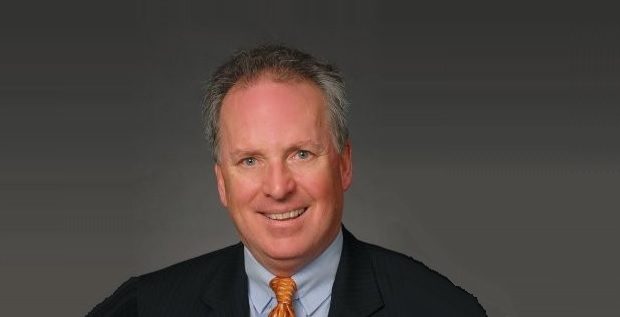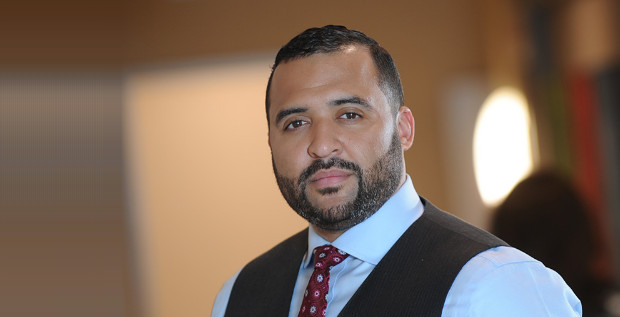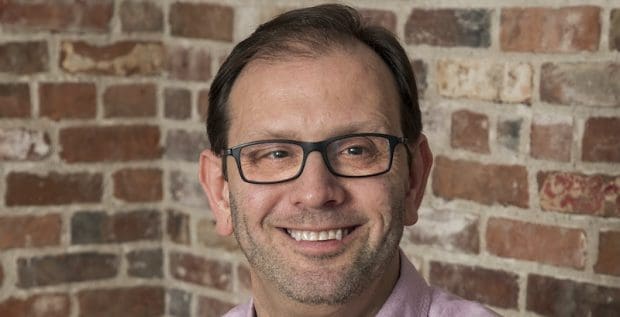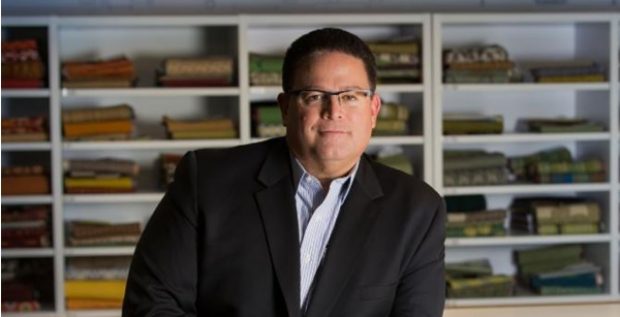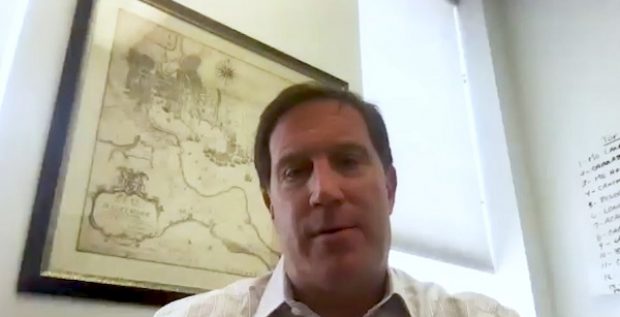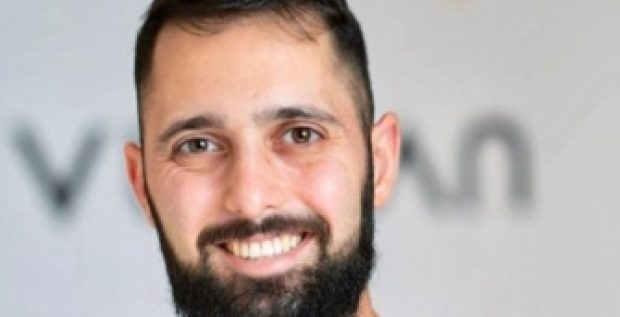Interviewed by Guy Flynn and Mark Fetting
Tom Wilcox, 69, will step down from the Baltimore Community Foundation at the end of the year, after 17 years at the helm of the umbrella philanthropic organization that brings together scores of donors and millions of dollars for the welfare of Greater Baltimore.
When Wilcox assumed leadership of the BCF, it gave out grants of $5 million annually. As he readies to exit, that number has grown five-fold to $25 million, while the endowment at its command is inching toward $200 million.
In an interview with DLA Piper’s Guy Flynn and former Legg Mason CEO Mark Fetting, Wilcox recounts his distinguished stint at the head of “a philanthropic bank,” after nearly two decades in education as head of Concord Academy. “Baltimore boasts of a growing economy, in which all have the opportunity to thrive. It’s about merging economic development with poverty reduction, so that all boats go up, and particularly those people who aren’t yet even swimming necessarily can be fully floating and moving forward,” Wilcox said.
Flynn, a lawyer, is a member of the five-person Baltimore City Board of Ethics and a past chairman of the Maryland State Bar Association’s Real Property Section Discussion Group. Fetting is associated with a variety of charitable and philanthropic work and headed United Way of Central Maryland’s fundraising campaign in 2013.
GUY FLYNN: Good morning, I am Guy Flynn. I am the chair of DLA Piper’s Maryland real estate practice, and I am a BCF trustee, and I am here to interview Tom Wilcox. So Tom, thank you for joining me.
TOM WILCOX: Thank you. It is great to be here. Thank you for your service to BCF, Guy.
GUY FLYNN: Well, my pleasure. Tom, you’ve had a long and successful career in education including 19 years as head of Concord Academy before being recruited to BCF. That’s an interesting switch from education to philanthropy. What persuaded you to change direction?
TOM WILCOX: Well, I am not sure that it is totally a change in direction, as opposed to an evolution in my own career and to my experience with independent education. I have often characterized it as moving from desegregation to integration, to inclusion, to racial equity. I was at Riverdale School in New York when they took their first two African-American students in my class. One was a fellow named Skipper Powell, his father was Adam Clayton Powell, the well-known congressman from New York, and the other was a fellow who played a little football in Calvin Hill.
They were early on in their life and it was very interesting for me to experience their experiences, and to sort of come alive around these topics. Interestingly enough, I attended a high school in Connecticut that nobody ever heard of called Wooster School and what made it distinctive was the fact that when I started there in 1960, it was 20% African-American, which was unknown in an independent boarding school. I got to experience integration, and for us it was our reality. For the rest of the schools in New England, it became the model. They came and interviewed us, and ironically there was a headline in the college board magazine that said, the school that wanted Negroes, shows you just how far we have come. It became the model actually for something that’s now called a better chance, that has put tens of thousands of students in independent schools and I had the privilege of serving many, many, many of them over the years. I adore these kids.
Then, later in my career I ended up starting an association of boarding schools and then ran public information for all the independent schools in the country in the late 70s. We recast independent schools not as old money, all-white, exclusive, but rather as fully diverse and welcoming to all parties and got wonderful coverage in the national media on some of the progress that had been made and some of the bold goals that were being set. It started to work toward real integration and maybe a little bit of inclusion.
I served this school, Concord Academy, for 19 years as head and we went from 3% kids of color to 30% kids of color over that 19-year period, and went from having a voiceless minority to a very big voice among a lot of kids who really, and faculty, who made us change and all to the good. We became an inclusive or more and more inclusive place, really looking at our privilege, looking at all the issues around structural racism.
To go from 3% to 30%, you’ve got to raise a lot of money. Economic realities were that at least at that point there wasn’t that big a pool of full-paying African-Americans, so we ended up having a lot. By the time we got really integrated, we became a school of choice for the Henry Louis Gates Juniors of this world where we had his wonderful daughter Maggie and others. We had to raise a lot of money and so the fact that we had done that, I think, put me somewhere where BCF might look for me. And we dealt deeply with race issues, and that was something that BCF was starting to understand needed to happen. We started a program with public and private schools there that we have actually scaled here in Baltimore, that rather than creaming kids from public schools so they could attend independent schools, we got them ready to excel in our best public schools. So we get stronger partners in the public sector; that was sort of a transition to that.
I also needed to figure out what I was going to do when I grew up because I became a head at 33, and it is not something you do for 60 years. I spent a sabbatical at the Packard Foundation in California and had a full year while they were figuring out how to get bigger. They were getting bigger because Mr. Packard had just died and the assets were going from $1 billion to $9 billion. They brought a few people in to sort of help them figure out how to do it, and I figured out that as nice as private foundations were, it is more about analytics than it is about actually doing. You are more like a stock picker than you are somebody who is actually an entrepreneur making it happen, and I figured out that community foundations are where things actually happen.
So when the time came to move on from Concord Academy, I heard about BCF. My mother was in her final months. She was from Baltimore. I visited family here. I had a lot of Baltimore connections when I grew up in New York and that was a conscious decision by my parents to raise us in an integrated environment in New York City and not where it was still very segregated in Baltimore. It was appealing, so it was something of a natural transition and Wally Pinkard, the then chair, actually said to me that I wanted to go national with this public school program, public private program, and he said, ‘well if you come and consider serving our community foundation, we will give you some money for something you could start here and scale it.’
It was a bit of a transition and my ongoing sense that private institutions need to serve a larger public purpose. So it felt really natural and even though I had never lived here, in many ways I was coming home. I knew a lot of my parents’ friends who have since died but I knew a lot of them, so it just felt right and happily I explained to the board that we had done a lot of work in this area at Concord Academy on race-equity inclusion and I said I can have an impact on what the staff looks like, but I can’t necessarily have an impact on what the board looks like. In fact, I shouldn’t. This is your choice and I work for the board. They said we’ll do something about that and Wally said we are going to get five more African-American trustees as soon as we can. So, of the next seven trustees that were named, five were African-American and the two token whites were the president of Johns Hopkins and the president of Annie E. Casey Foundation. We said, if we have to have tokens, they might as well have a decent job to be able to help us in the community.
Connect with Tom on LinkedIn








